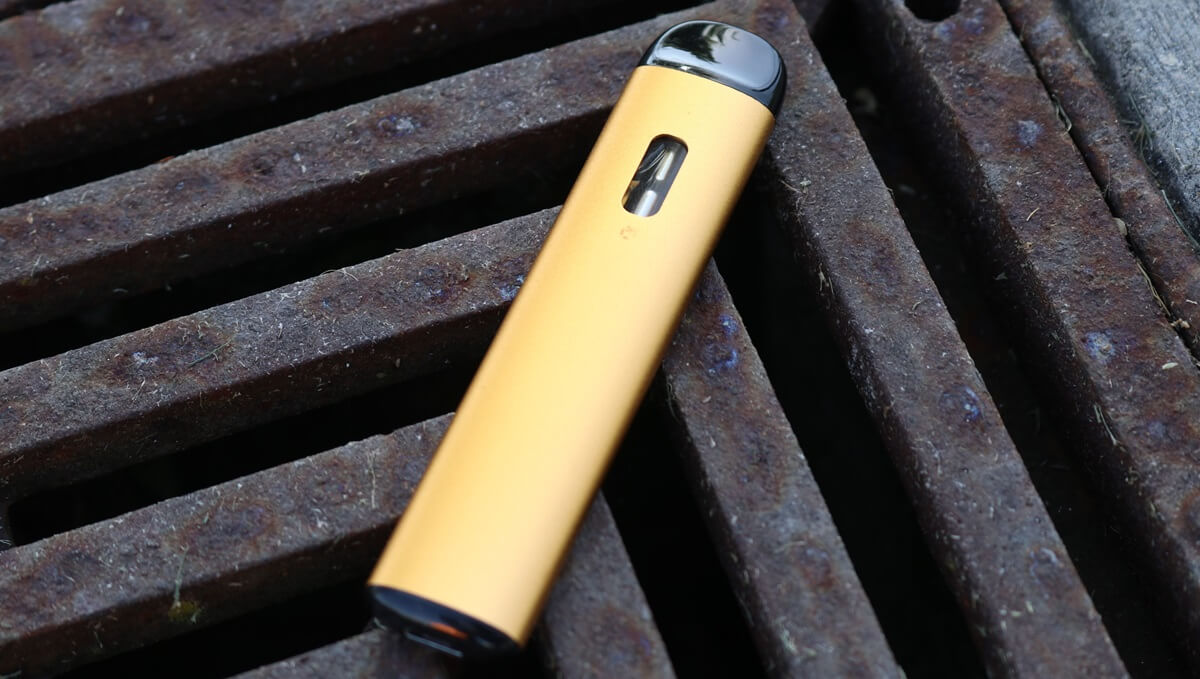What is passive smoking and is it harmful?
Tobacco smoking continues to ravage the Australian and global population. Despite decades of campaigning and education around its dangers, smoking continues to be the nation’s highest cause of preventable death, and is responsible for taking the lives of over 24,000 Australians every year. When we look beyond our shores, this number climbs ever higher to approximately 7 million people world-wide, dying every year. While the death toll is a staggering number in its own right, for every death, there are 30 more people within the community battling dangerous, smoking-related illnesses.
But what about those who do not smoke directly, but are constantly in the proximity of those who do? Are we spending enough time focusing on what passive smoking actually is, as well as the harmful effects that come with it?
Passive smoking, also known as the consumption of second-hand smoke, is defined as anyone inhaling the smoke emitted by other’s cigarettes. There is no ‘safe amount’ of passive smoking, and unfortunately, the facts show that second-hand smoke is more harmful than people realise, with friends and family consistently sharing a space or living with a smoker at a 25-30% higher risk of developing devastating illnesses, including heart disease.
Making matters worse, tobacco smoke can hang mid-air within a room, rather than disperse, given that hot smoke rises and tobacco smoke cools, the upward climb is prevented, keeping the haze at mouth level. Smokers therefore create a room filled with toxic air that others are forced to inhale. To curb these dangers, a range of laws have been introduced that are designed to protect non-smokers. After all, the only environment that is safe from the harmful effects of passive smoke is a 100% smoke-free space. Similar to bans on advertising laws, which prohibit any material publicly encouraging or persuading people to smoke, and tobacco packaging laws, stating all tobacco products must display certain text and graphic health warnings, there are also a range of ‘smoke-free’ laws laid down by the state and territory governments in order to protect people from second-hand smoke. These make it illegal across Australia to smoke in enclosed public spaces, such as:
- On public transport
- Shopping centres
- Cinemas
- Airports
- Schools
- Outdoor dining areas where food is consumed
- Enclosed restaurants, hotel dining areas and cafes
- Underage music or dance events
- Childcare centres
- Courts and police stations
It has also become illegal to smoke in a car with a minor present, with ages ranging between 16 – 18 depending on the jurisdiction. The ongoing hope of public smoking bans is that it will also establish voluntary home smoking restrictions, as smokers realise the damage they could be inflicting upon their loved ones.
The risk associated with second-hand vaping or ‘passive vaping’ is yet to be established, so cannot be considered safe. As such, any restrictions on smoke-free areas also apply to vapers. This is unlikely to change in the near future, until the long-term safety of vaping, both to the user and those around them can be established. If you are vaping instead of smoking, it is still important that you recognise that you should only do so away from others, outside, and not in a designated smoke-free area.
How does passive smoking affect people around you?
As tobacco smoke is filled with countless toxic chemicals and components (with over 70 that can cause cancers to develop), including ammonia, sulphur and formaldehyde, even the smallest amount of exposure can cause damage to our health, especially over prolonged periods of time. As mentioned above, the risk for developing serious conditions jumps when you live with a smoker, and in Australia alone, for every eight smokers who will lose their life to an illness caused by smoking, there will also be a non-smoker killed from a similar condition, due to their exposure to second-hand smoke. One of the more startling facts behind second-hand smoke is that it will result in approximately 1.2 million deaths each and every year across the world.
The facts don’t lie – second-hand smoke can lead to detrimental illnesses for anyone. With that being said, there are members of the community who are more at risk of the harmful effects than others.
Children
Despite their smaller bodies, children actually breathe faster than adults, leading to their lungs inhaling a greater amount of chemicals during exposure to passive smoke, making them especially vulnerable to damaging side effects. Second-hand smoke therefore relates to a greater risk of:
- Developing asthma and suffering from the associated symptoms
- Poor lung development, as the toxic chemicals and increased carbon monoxide levels exacerbate allergies and promote respiratory illnesses, such as bronchitis, bronchiolitis, croup, pneumonia, and a host of others that can cause great suffering and even prove fatal
- Behavioural problems, such as Attention Deficit Hyperactivity Disorder (ADHD) and anti-social behaviour have been recorded with linkages to passive smoking
- Middle ear infections that leave the child with temporary or longstanding impairment with their hearing
- Sudden Infant Death Syndrome (SIDS) is twice as high for children exposed to second-hand smoke
Children living with someone regularly smoking in the home are said to breathe approximately the equal amount of nicotine as smoking 60 to 150 cigarettes a year themselves. And with the familiarity of smoking throughout their development, children of smoker’s have a doubled likelihood of becoming smokers themselves in their adult life.
Pregnant Women and Unborn Babies
During pregnancy, babies are at their most vulnerable of external influences affecting their initial development. The effects of pregnant mothers smoking are well-documented, increasing the risks of miscarriage, stillbirth, ectopic pregnancy (embryo outside of uterus), and pre-eclampsia. There are also higher risks for the baby, including:
- Premature births resulting in incomplete development
- Birth defects, including cleft palate and cleft lip
- Born dangerously underweight
- Issues with resting and feeding
- Middle ear infections and hearing difficulties
- Permanent damage to the brain, lungs, and blood
In fact, should a baby have prolonged exposure to second-hand tobacco smoke whilst still developing within the womb, they have an increased likelihood of developing diabetes, kidney disease, heart disease, and obesity as an adult. The same applies should people smoke around a pregnant woman, rather than her smoking directly herself.
Spouse and Partners
Romantic couples that include a smoker will naturally share close proximity over extended periods. Unfortunately, this poses some significant risks for both parties developing tobacco-related diseases, including:
- Heart diseases and stroke due to blood vessels increasing in viscosity, becoming stickier and with a higher probability of clotting
- Blood vessels poorly regulating circulation (initial effects can occur within just 30 minutes of passive smoking)
- Cancer within the lungs, mouth, throat, larynx and other areas of the body
- Chronic obstructive pulmonary disease
A special consideration between families is also their ability to start a family. Passive smoking can have an impact on fertility in both men and women, even when opting for in vitro fertilisation (IVF).
How can you protect those around you from passive smoking?
Now that we have explored some of the more harmful effects of passive smoking, it begs the question about what smokers can do to minimise the damage caused to those around them. The most effective solution is to pursue quitting smoking altogether. For many, this is easier said than done as nicotine is a highly addictive substance and creates powerful dependencies. More than half of smokers will confess a desire to quit, yet only 6% of those who try will actually succeed.
Finding a powerful motivation is the secret to success when quitting smoking. Given the statistics around passive smoking, quitting can minimise the risk of unnecessary health issues developing in those you love, or who live in the same community. At the very least, it may give you more time to spend with them, as you have no reason to leave public spaces due to smoke-free laws.
Should you not be ready to quit smoking, it is imperative to be conscious of your habit and minimise the exposure of others to tobacco smoke. Keep your home a smoke-free location and go outdoors for a cigarette. This also extends to driving in the car – winding a window down for airflow will not be satisfactory, so it is best to wait until you have reached your destination and find an unoccupied, outdoor location to smoke. Also, remember to always respect the laws surrounding public areas. This should be encouraged with other smokers, too, should they visit your home, or if you notice poor behaviour in common areas. This is an excellent demonstration for children on the correct practice, educating them on the dangers of smoking, deterring them from adopting the habit, and why to avoid people smoking within their proximity.
If you want to reduce or end your smoking habit, you do not have to go through it alone. One of the largest contributors to failure is attempting to manage the stressful transition yourself. Accept support from your loved ones, or engage with the services from trained professionals ready to help on your journey for a healthier life.






